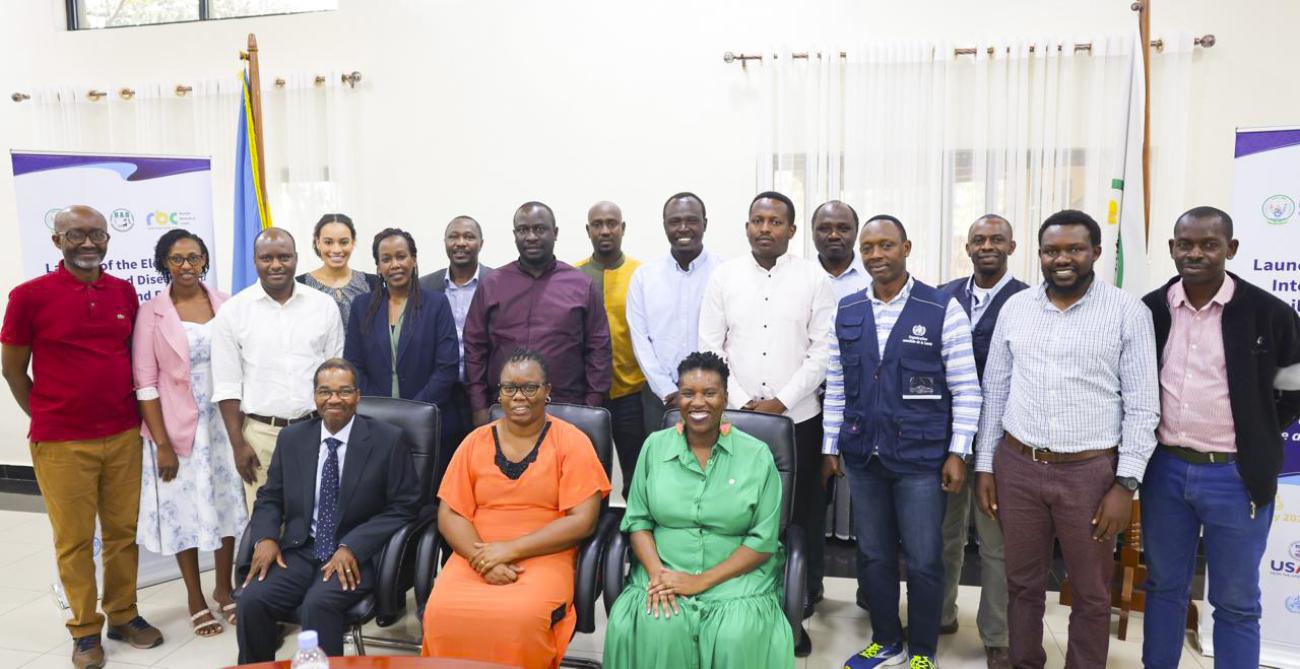The health of animals and humans are intertwined, and Rwanda's Sector Animal Resources Officers (SAROs) play a crucial role in safeguarding public health. To enhance their ability to detect and respond to animal diseases, the World Health Organization (WHO), the Food and Agriculture Organization of the United Nations (FAO), in collaboration with Rwanda Biomedical Centre (RBC), Rwanda Agricultural Board (RAB), USAID and Clinton Health Access Initiative organized a series of cascade trainings on the use of the animal Electronic Integrated Diseases Surveillance & Response (e-IDSR) system. This initiative builds on RBC’s strong capacity in human e-IDSR. With the rising threat of emerging and re-emerging diseases, this multi-stakeholder collaboration within the One Health framework, aims to strengthen early detection and response to diseases affecting both humans and animals.
The e-IDSR system, initially developed for human health, has been adapted for animal health, empowering SAROs to collect, analyze, and digitally report data on animal health, and take timely and appropriate action. By leveraging this technology, Rwanda is making significant strides in improving disease surveillance and response, linking both human and animal health.
“Before the training, we used to do paper-based monthly reporting that took a lot of our time. This electronic system will help us veterinary officers to instantly report the occurrence of animal diseases, and for RAB and other institutions to immediately review the information and take timely and appropriate action to combat diseases.” said Dr Abdon Nteziryimana, veterinary officer in Nyarugenge District
The training aimed to equip SAROs with the skills necessary to effectively utilize the e-IDSR system, enabling them to play a more proactive role in protecting animal health. The cascade training provided SAROs with knowledge and skills in data entry, analysis, reporting visualization and use. Through hands-on exercises and group discussions, participants gained practical experience in using the system to identify and track disease outbreaks, and inform public health interventions.
“Disease outbreaks can overwhelm weak health systems in any country that lacks the tools, infrastructure, policies, and systems to keep communities healthy and safe. To efficiently respond to these public health concerns, a well-functioning disease surveillance system is urgently needed for early detection and quick data exchange, enabling a rapid response using a One Health approach.” said Dr. Mushayija Jean Paul, FAO Epidemiologist
A total of 315 veterinary researchers at central level and veterinary officers at national, district and sector level were trained on the use of the e-IDSR system. Furthermore, with support from USAID, WHO, and FAO 315 tablets were provided to RAB to enable the trained veterinary officers to access and use the e-IDSR system in disease surveillance from data entry in the field to data analysis, reporting and taking timely and appropriate action.
“We appreciate the invaluable support of USAID, WHO, FAO, CHAI, whose contributions have been instrumental in making this initiative possible. This collaborative partnership demonstrates the power of leveraging our respective comparative strengths to deliver impactful products and programs.” said Dr Solange Uwituze, Deputy Director General of RAB.
This collaboration between USAID, WHO, FAO and CHAI will improve timely disease detection, preparedness, and reporting for appropriate disease response.
“As part of the national One Health strategic plan, this initiative will enhance early warning and detection of animal and zoonotic diseases, and improve public health emergency preparedness and response coordination at the national and subnational level.” Dr Lyndah Makayoto, WHO Emergency Preparedness and Response Team Leader.




